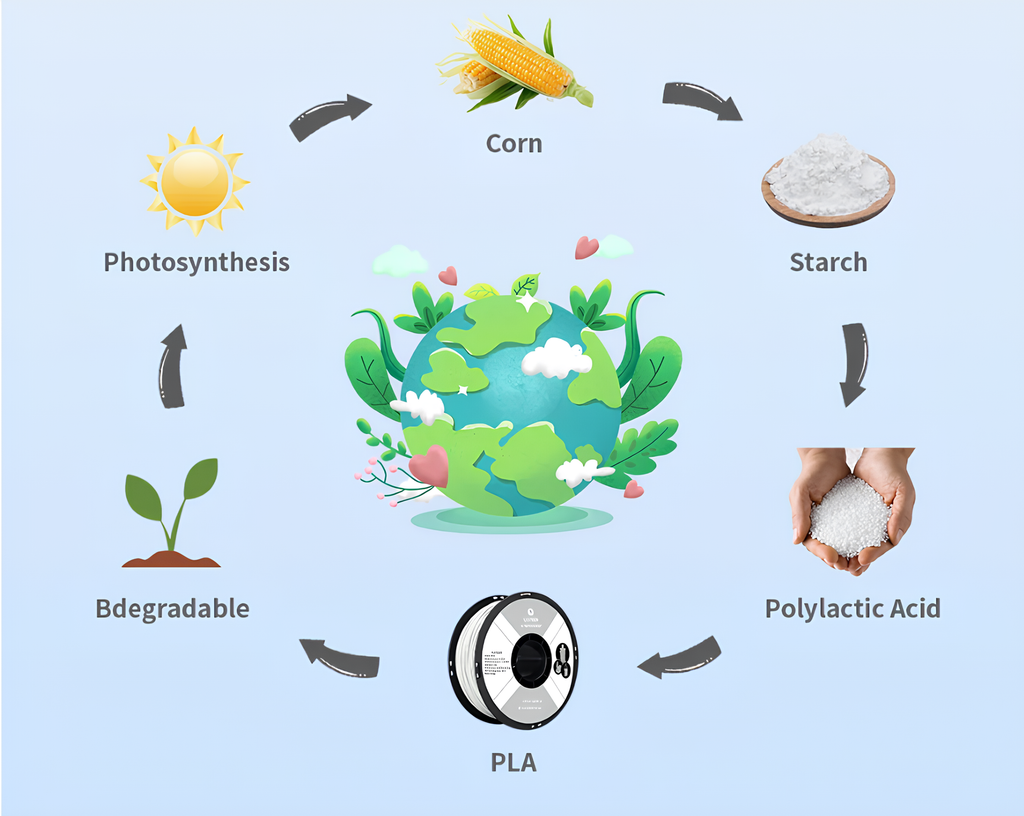Unlock the Secrets of PLA Filament: What You Need to Know Before You Buy!
In recent years, PLA (Polylactic Acid) filament has surged in popularity among 3D printing enthusiasts and professionals alike. Its ease of use, vibrant colors, and relatively low cost make it an attractive choice for various projects, from prototypes to intricate designs. However, as more consumers turn to this versatile material, it becomes increasingly important to understand its safety features and potential hazards. This knowledge is crucial for making informed purchasing decisions that prioritize both quality and safety. In this article, we’ll explore the fundamentals of PLA filament, its safety aspects, and best practices for usage to ensure a safe and enjoyable 3D printing experience.

Understanding PLA Filament
PLA filament is derived from renewable resources like corn starch or sugarcane, making it a popular choice for environmentally conscious users. Its biodegradable properties set it apart from traditional petroleum-based materials, allowing it to decompose under the right conditions. PLA is widely used for various applications, including prototypes, educational projects, and even some food-safe items, although the latter often requires additional certifications. Compared to other materials like ABS (Acrylonitrile Butadiene Styrene), which can emit harmful fumes when heated, PLA is generally considered safer and more user-friendly. This eco-friendly profile has contributed to PLA’s reputation as a go-to filament for both beginners and experienced users in the 3D printing community.
Safety Aspects of PLA Filament
When it comes to safety, PLA filament has several advantages. It is non-toxic and does not release harmful chemicals during printing, making it safer for indoor use compared to other filaments. However, while PLA is generally considered safe, it’s essential to be aware of certain health risks associated with its use. For instance, the process of 3D printing can release ultrafine particles and volatile organic compounds (VOCs) into the air. Although these emissions are typically lower than those from other materials, prolonged exposure to them, particularly in poorly ventilated spaces, could pose health risks. Additionally, while PLA is non-toxic, it’s not entirely risk-free; ingestion of filament or contact with the skin in certain circumstances may cause irritation or allergic reactions in some individuals. Thus, understanding these aspects helps users navigate the potential hazards associated with their 3D printing endeavors.
Is PLA Filament Toxic?
The question of PLA filament’s toxicity warrants careful examination. Scientific research indicates that PLA is primarily safe for use, with limited evidence supporting any significant health threats. Studies have shown that the inhalation of ultrafine particles generated during 3D printing can lead to respiratory issues, although the risk is markedly lower with PLA than with other filaments. Moreover, while skin contact with PLA is generally safe, some users might experience mild irritation or allergic reactions. A friend of mine, an avid 3D printing hobbyist, once had a minor skin rash after prolonged handling of PLA without gloves, which serves as a reminder that even seemingly harmless materials can cause reactions. Ingestion is another concern, especially for households with small children or pets, as PLA is not meant for consumption. Overall, while PLA filament is largely non-toxic, it’s wise to exercise caution and adhere to safety guidelines to mitigate any potential risks.
Best Practices for Using PLA Filament Safely
To ensure a safe 3D printing experience with PLA filament, following best practices is essential. First and foremost, always work in a well-ventilated area to minimize exposure to any particles or fumes released during printing. This could mean setting up your printer near a window or using a fan to circulate air. Additionally, consider wearing a mask and safety goggles, particularly if you’re working on larger projects or using higher-temperature settings. Proper storage of PLA filament is also crucial; keep it in a cool, dry place, preferably sealed in an airtight container to prevent moisture absorption, which can affect print quality. Finally, if you’re printing items intended for food contact, ensure that your filament is certified as food-safe, and use dedicated nozzles and printers for such projects. By following these guidelines, you can enjoy the many benefits of PLA filament while minimizing any associated risks.
Key Takeaways on PLA Filament Safety
In summary, understanding the safety aspects of PLA filament is vital for anyone looking to embark on a 3D printing journey. While PLA is generally regarded as a safe and eco-friendly option, it’s important to remain aware of its limitations and the potential hazards it may pose. By prioritizing safety alongside cost and quality, you can make informed purchasing decisions that lead to a successful and enjoyable 3D printing experience. Remember to stay informed, follow best practices, and enjoy the exciting possibilities that PLA filament has to offer!







